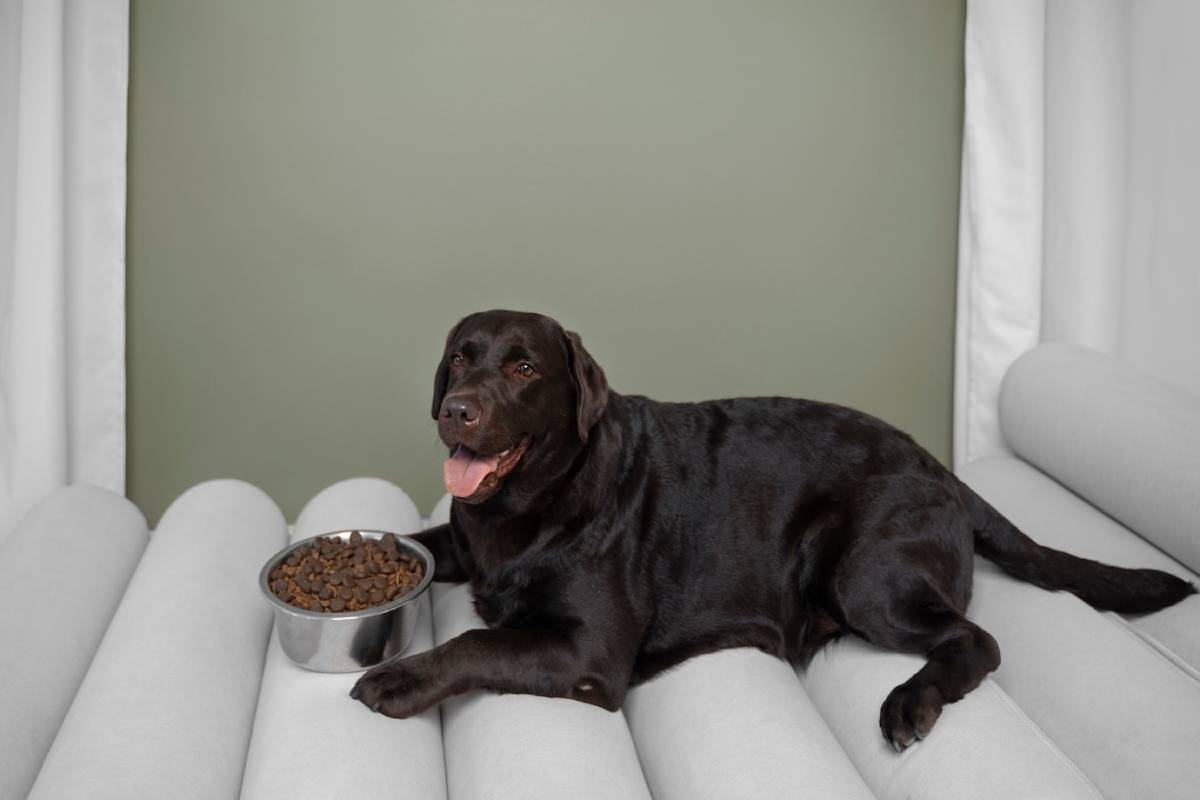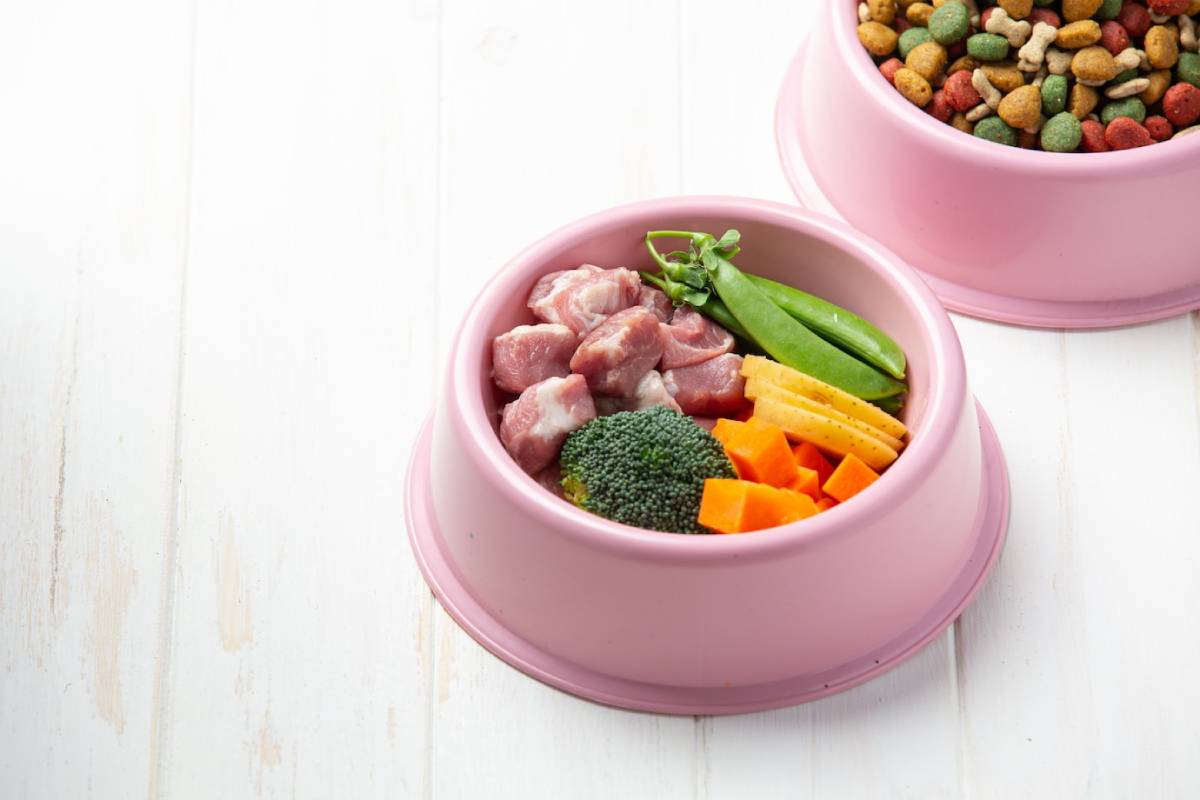
How to Make Balanced Homemade Dog Food
Creating a balanced homemade dog food diet isn’t just a trend—it’s a lifestyle choice that’s reshaping how we nourish our pets. If you’re someone who wants to know exactly what’s going into your dog’s bowl, this guide is for you. With growing concerns about commercial pet food ingredients, more dog owners are taking control of their pet’s nutrition. But with that freedom comes responsibility—the responsibility to ensure your dog’s meals are nutritionally complete.
This in-depth guide walks you through how to make a balanced dog diet at home. Whether you’re just starting out or want to refine your current homemade routine, you’ll find step-by-step guidance, professional tips, and important safety insights—all grounded in solid veterinary nutrition.
Understanding the Core: What Makes Dog Food “Balanced”?

Before diving into recipes, it’s crucial to understand what a balanced meal means for your dog.
A balanced diet for dogs includes six essential nutrient groups:
- Proteins – for muscle maintenance and immune function
- Fats – for energy and healthy skin
- Carbohydrates – for fibre and digestion
- Vitamins – for immune support and cellular functions
- Minerals – for bone health, nerve function, and more
- Water – often overlooked, but critical
Why Homemade Nutrition Requires Extra Care
Commercial dog foods are regulated to meet minimum nutrition standards. Homemade meals are not—so—it’s up to you to meet those same standards. Missing even a single nutrient for an extended period can lead to health problems, ranging from skin issues to organ damage.
According to the British Veterinary Association (BVA), poorly balanced homemade diets are a leading cause of nutritional deficiencies in dogs. That’s why using a complete dog food recipe or consulting a vet is non-negotiable.
Quick Guide: Key Components of a Balanced Dog Meal
Here’s a snapshot of what a balanced bowl might look like:
- 40% lean protein (chicken, turkey, beef, fish)
- 25% cooked complex carbohydrates (brown rice, oats, quinoa)
- 25% vegetables (carrots, peas, spinach, courgettes)
- 10% healthy fats (fish oil, olive oil, flaxseed oil)
- Supplemental nutrients (calcium, vitamin E, omega-3s, probiotics)
Pro Tip: Never eyeball it. Always use a kitchen scale for precision and adjust ratios based on your dog’s weight, age, and activity level.
Step-by-Step Guide: Making Complete Homemade Dog Food
Step 1: Choose Your Protein Base
Pick one primary protein source. Options include:
- Chicken (breast or thigh, skinless)
- Turkey (lean mince)
- Beef (90% lean mince)
- Fish (salmon or whitefish—deboned)
Important Tip: Rotate proteins weekly to offer a broader nutrient profile and reduce food sensitivities.
Step 2: Add Digestible Carbohydrates
Choose low-glycemic, whole-food carbs:
- Brown rice
- Quinoa
- Sweet potato
- Rolled oats
Cook thoroughly before adding to meals to improve digestibility.
Step 3: Include Fresh Vegetables

Vegetables should be steamed, grated, or pureed. Some good options:
- Carrots
- Green beans
- Courgettes
- Spinach (in moderation)
- Peas
Avoid onions, garlic, leeks, and avocados—they’re toxic to dogs.
Step 4: Add Healthy Fats
Incorporate:
- 1 tsp of fish oil per 10kg of body weight
- A drizzle of flaxseed or olive oil
These support coat health, brain development, and inflammation control.
Step 5: Supplement Wisely
Homemade dog food often lacks critical micronutrients. Add:
- Calcium: If you’re not feeding raw meaty bones, add ground eggshell powder or a vet-approved calcium supplement.
- Multivitamin powder: Formulated for dogs (avoid human vitamins)
- Omega–3 capsules (especially if fish isn’t a staple)
- Probiotics: Help with digestion and immunity
Important: Never assume a recipe is complete without vet validation. Nutritional balance requires more than just “good” ingredients—it’s about getting the ratios right.
Best Practices for Homemade Dog Nutrition
Batch Cooking & Storage
Cooking in bulk saves time, but storage is key. Portion and freeze meals in airtight containers, clearly labelled with dates.
- Refrigerate for up to 3 days.
- Freeze for up to 3 months
Tip: Use BPA-free containers or silicone freezer trays to keep meals safe and fresh.
Monitor Your Dog’s Health
Regularly monitor:
- Coat condition
- Energy levels
- Stool quality
- Weight stability
Any change might signal a nutritional imbalance. Adjust recipes or seek veterinary advice if needed.
Reassess Nutritional Needs
Puppies, pregnant dogs, seniors, and highly active breeds all have different nutritional requirements. Always tailor the recipe accordingly and adjust over time.
Additional Insights: Enhancing Your Homemade Meals
- Use organ meats: Liver, kidney, and heart are nutrient-dense—ideal in small amounts.
- Rotate vegetables weekly to offer variety.
- Bone broth (unsalted, homemade) can be added for hydration and joint support.
Veterinary Nutritionist Tip: Consider using platforms like Balanceit or PetDiets to calculate exact nutrient content and get vet-reviewed recipes.
Frequently Asked Questions
Is homemade dog food better than commercial food?
It can be—if done correctly. When balanced and well-supplemented, homemade food can be fresher and less processed than kibble. But it requires careful planning and monitoring.
How do I know if the food is balanced?
Unless you’re using a recipe developed by a vet or pet nutritionist, it likely isn’t. Use tools like NRC guidelines or vet-reviewed calculators to verify.
Can I switch my dog overnight?
No. Always transition slowly over 7–10 days to avoid digestive upset.
Do I need to use supplements?
Yes. Homemade meals, even those with high-quality ingredients, are often deficient in calcium, vitamin D, and other essentials.
How much should I feed?
Roughly 2–3% of your dog’s body weight daily. A 20kg dog might need about 400–600g of food daily, but constantly adjusts based on age, breed, and activity.
Key takeaways:
- Aim for complete nutrition, not just variety
- Use scales and proper tools to measure accurately
- Always supplement under professional guidance
- Monitor your dog closely and adjust as needed
Wrapping Up: Build Your Dog’s Health One Bowl at a Time

Making balanced homemade dog food may seem daunting at first, but it’s an incredibly rewarding journey. You’re not only feeding your dog—you’re fuelling their vitality, longevity, and happiness.
Ready to start? Try one of the basic recipes, get a vet’s input, and begin building a food routine that works for your dog—and your lifestyle.
Let us know how it goes. Share your experiences, drop questions in the comments, or subscribe to our pet care newsletter for more expert guides.


